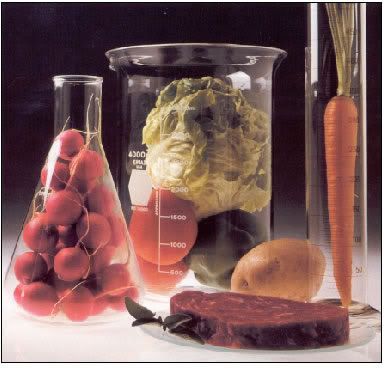Nutrition and aging.
Recent decades of research in elder populations in developed countries have documented the nutritional vulnerability of older individuals, even under relatively affluent circumstances. Although total energy intake declines with age, requirements for many nutrients go up to maintain organ systems with declining functionality. It is, therefore, more difficult for elderly to meet their nutrient requirements than for younger adults, and the selection of nutrient-dense foods becomes of even greater importance.
Recent research illustrates that protein adequacy is critical for maintaining functional status with age. It is found that older adults provided with diets containing 0.45 g protein · kg body wt-1 · d-1 for 9 wk had significant losses in lean tissue, immune response and muscle function. Recent studies suggest that protein requirements to retard loss of muscle mass and bone mass with aging in older individuals may be greater than previously thought. Short-term nitrogen balance results suggest that a safe recommended protein intake for older men and women should be 1.0–1.25 g high quality protein /kg/d.
Aging is generally associated with a gradual decrease in muscle mass (sarcopenia). Loss of muscle mass poses significant risks, including lower resting metabolic rate, reduced muscle strength and increased functional dependency. In the combined New Mexico Aging Process Study and the New Mexico Elder Health Survey, the prevalences of sarcopenia and sarcopenic obesity (relatively high ratios of body fat to muscle mass) were 15 and 2%, respectively, in 60–69 y olds and 40 and 10%, respectively, in those more than 80 y of age. Elders at greatest risk for disability and for several chronic diseases in this population were those who were both sarcopenic and obese. In addition to adequate protein intake, resistance exercise has shown great promise in preventing sarcopenia. One study demonstrated that nitrogen excretion decreased 10–15% at the beginning of resistance training and persisted for 12 wk.
Micronutrient inadequacies are common among elderly, even in the most developed countries, and they have increasingly been linked to risk of chronic disease. For example, vitamins B-6, B-12, and folate are required to prevent the accumulation of homocysteine, an amino acid that has been consistently associated with risk of vascular disease, and recent studies have also shown associations between low concentrations of these B vitamins and cognitive decline. In addition, vitamin B-12 is needed to maintain neurological function. Data from several studies suggest that inadequate blood concentrations of these B vitamins are prevalent in older populations. In the Netherlands, 10–45% of adults aged 65 y and older were deficient in vitamin B-6. Older persons have greater difficulty absorbing vitamin B-12 because of atrophic gastritis, a degenerative stomach condition estimated to affect 25–40% of U.S. elderly. Despite apparently adequate intakes of vitamin B-12, relative to recommendations, more than 16% of elders in the U.S. Framingham Study had low vitamin B-12 concentrations. One of the few studies on B vitamins in elderly in Latin America found prevalences of folate deficiency (less than 7 nmol/L) of 51% in men and 33% in women and prevalences of vitamin B-12 deficiency (less than 148 pmol/L) of 51% in men and 31% in women. On the other hand, in a small sample of elderly in Bangkok, Thailand, folate deficiency was found for 21% and vitamin B-12 deficiency was found for only 7% of cases.
Calcium and vitamin D are also nutrients of particular concern for elderly populations. With age, declining renal function leads to malabsorption of calcium and accelerated bone loss. Requirements for vitamin D also increase with aging. Despite the greater availability of sunlight in most developing countries, relative to most developed countries, older individuals often have less exposure than younger adults. Furthermore, with age, there is decreased ability to form previtamin D-3- in skin with UV light exposure. The low calcium and vitamin D in the diets of many developing countries, together with the dietary and physical activity changes associated with the nutrition transition, suggest that osteoporosis will become an increasingly major problem as these populations age.
Antioxidant vitamins, including vitamin C, vitamin E, and a variety of phytochemicals, are important in maintaining effective antioxidant defenses against oxidant stress–related diseases, including cancer, cataract and Alzheimer’s disease. Vitamin E has also been shown to be effective in promoting immune function to fight infection. Very few studies of antioxidant status in developing countries are available. With the nutrition transition toward higher fat, lower fiber diets, attention to maintaining and increasing intakes of traditional fruits, vegetables and whole grains is of considerable importance in helping to control the worldwide increases in incidence of chronic disease.
Interestingly, the nutrients that have received the most attention for maternal and child nutrition—iron and vitamin A—are required in lower amounts by elderly than by younger adults. There is decreased clearance of vitamin A by hepatic and other peripheral tissues with age. Similarly, iron stores accumulate with age, and high serum ferritin has been associated with greater risk of coronary heart disease. Consequently, micronutrient fortification programs should consider the possible effects on the growing elderly segment of their populations.




0 Comments:
Post a Comment
<< Home